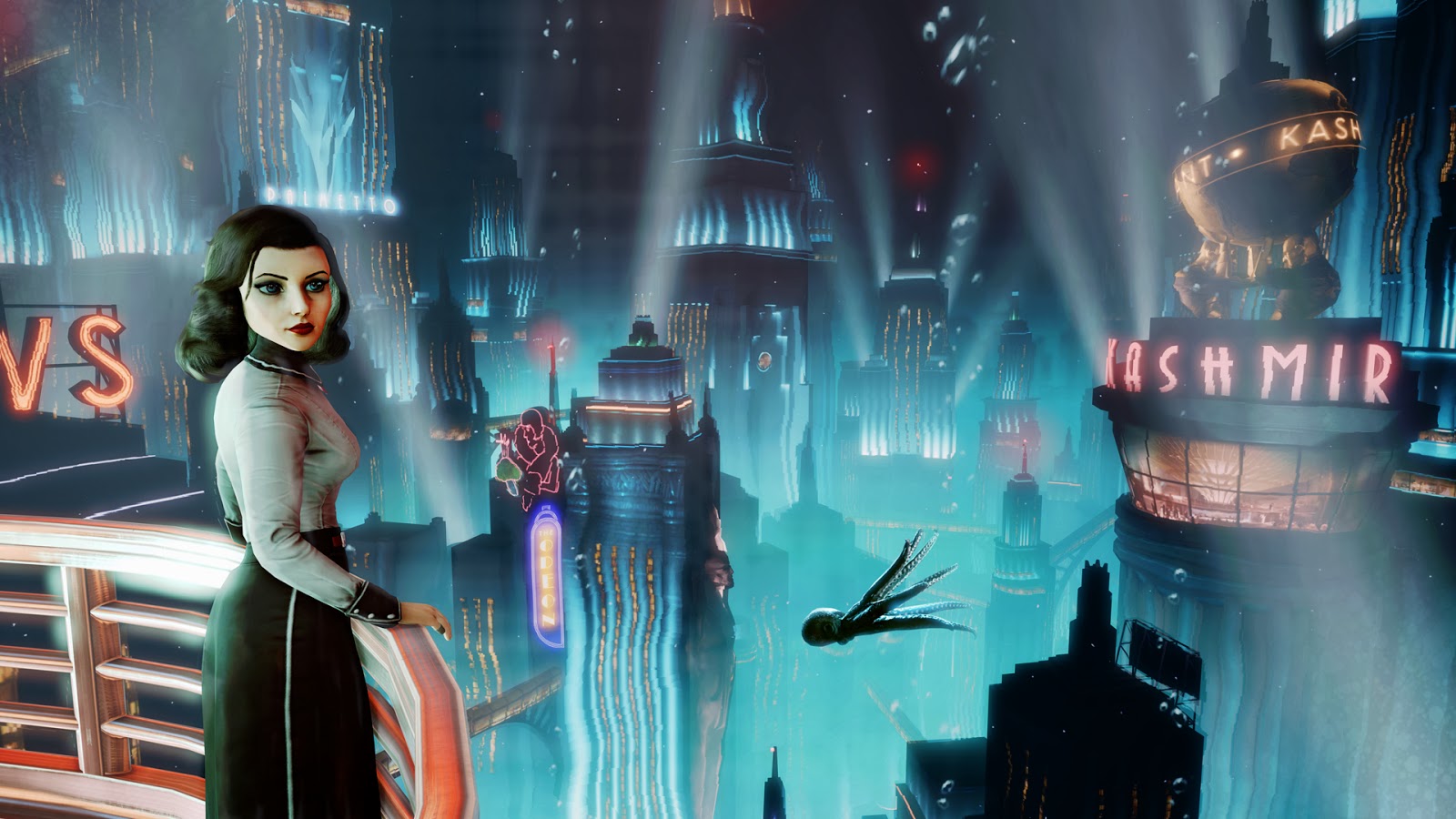BioShock Infinite: Burial at Sea - Episode One Review
Welcome back to Rapture.
Game review by Isaac Handelman
The first part of BioShock Infinite’s episodic DLC expansion, Burial at Sea, is immediately familiar, wasting no time in plopping players back into the shoes of Booker DeWitt. This version of the private-investigator protagonist is living in a thriving, pre-fall Rapture, the setting of BioShock and Bioshock 2. He’s approached by a noir version of Elizabeth, who claims to want to help Booker to find a lost girl named Sally whom Booker has paternal feelings for. Booker sets out alongside Elizabeth to track down the missing child.
The initial chunk of Burial at Sea - Episode 1 is comprised almost entirely of looking and listening. Players are granted their first opportunity in the series to explore a living version of Rapture rather than the destroyed remnants of the once-great city that welcomed players in the first two games. In this earlier version of the city, citizens stroll about admiring the view, Big Daddies tend to the underwater maintenance outside the city walls, shopkeepers tend to their colorful abodes, and colorful advertisements adorn the city’s walls.
One of Irrational’s greatests is in making their settings feel truly alive and real, and this spiffier version of Rapture is one of the more stunning sections of scenery the studio has yet produced. Fans of the first two BioShock games will likely spend a considerable amount of time gawking at the living, breathing world of Rapture as they’ve never seen it before. Irrational spent plenty of time stuffing the city rife with detail, and I found myself repeatedly stopping to examine trivial objects, such as record covers in a music shop, and bizarre, bunny-mask-clad dancers that welcome guests to Sander Cohen’s snoopy (and delightfully creepy) night club.
Sparse elements of gameplay do pop up during this mostly hands-off sequence, but they mostly just serve to pad the game’s duration. For instance, I was asked to search several shops for a mask that would grant me entry to a party. I searched all but one of the shops with no luck before my game crashed and I was forced to restart the section. After reloading my game, I decided to tackle the shops in an entirely different order, but found that the mask was arbitrarily programmed to appear in whichever of the shops I decided to visit last. This realization pulled me out of the experience, breaking the immersion that Irrational works so hard to build up -- and all for the purpose of extending Burial at Sea’s (brief) duration by just a few minutes.
Once the game opens up to combat, it becomes a much more typical BioShock experience. The game demands the survival-minded approach of BioShock and BioShock 2 as opposed to the more gung-ho sandbox style that Infinite offered up. That’s by no means a bad thing, but after the daring inventiveness that BioShock Infinite offered up around every corner, exploring the abandoned halls of Rapture and battling splicers feels comparably stale and familiar. Vigors are now the Plasmids of the first two games in the series, and the Skyhook makes a reappearance in the form of the “Air Grabber” (which is mostly pointless, as the item is rarely utilized outside of melee attacks), but outside of these changes, Burial at Sea is mechanically identical to the base game.
That’s typically to be expected out of a DLC pack, but what makes the choice disappointing in the context of Burial at Sea is the fact that Rapture and Columbia are two fundamentally different settings, and the cross-over ends up feeling shallow. Irrational makes some attempts to explain the overlaps, which are met with varying levels of effectiveness. One new plasmid is introduced (“Old Man Winter”), but it’s functionally identical to Winter Blast from the original games. One creative new gun is also introduced, but it’s done so late in the game that players get almost no time to actually use it.
And that’s the basic issue with Burial at Sea: it wants to be a cross-over between the best parts of Infinite and its predecessors compressed into just a couple of hours, but its most engaging section comes when the star of the show is Rapture itself. It ultimately feels like Irrational couldn't quite decide whether they wanted to deliver a pint-sized BioShock tangent, or a full BioShock experience compressed into a couple of hours. Infinite’s combat style fits well enough within the gameplay restraints of battling splicers, but the adventure is so brief that players don’t get any tangible sense of reward. Upgrades are scattered throughout vending machines, and the selection of plasmid powers is fairly robust for such a brief experience, but players simply do not have enough time to partake in the progression and experimentation that has made past BioShock games so enticing.
What’s left is a relatively straightforward, though undeniably well-crafted FPS side story, chock full of visual beauty and narrative intrigue, that ends just as its gameplay and narrative are starting to pick up steam.






Comments
Post a Comment